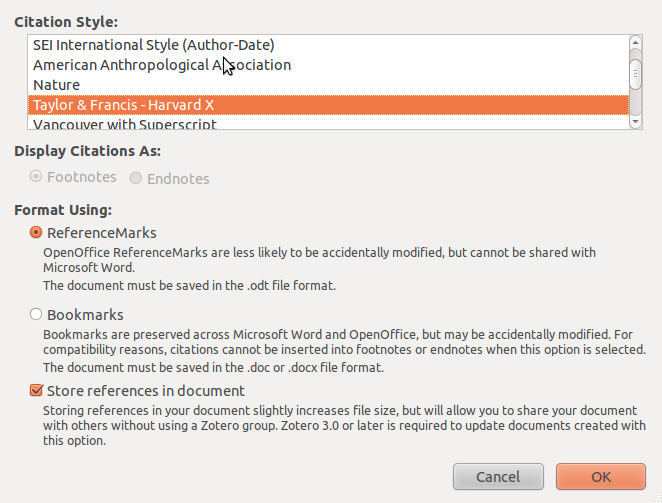

#HOW TO MAKE A FOOTNOTE IN ZOTERO PDF#
When you add a PDF as a standalone attachment, Zotero will automatically attempt to retrieve metadata for it and create a parent item, though in some cases this may yield lower quality metadata than importing using the Save to Zotero button on the article page from your browser. Standalone attachments can't have bibliographic metadata or child notes, so in most cases you'll want to create a regular parent item.
#HOW TO MAKE A FOOTNOTE IN ZOTERO PLUS#
You can also add an attachment to an existing item by clicking the paperclip button in the Zotero toolbar and selecting “Attach Stored Copy of File…” or “Attach Link to File…”, or you can add a standalone attachment by clicking the green plus sign ( ) and choosing “Store Copy of File…” or “Link to File…”. To add a PDF or any other file from your computer, simply drag it to Zotero - you can drag to an existing item to attach the file or drag between items to store as a standalone attachment. If a website isn't importing properly, please report it on the Zotero Forums and provide the webpage URL. You can choose an alternative translator by right-clicking on the Zotero save button (click-and-hold in Safari) and choosing one of the supplied options. Zotero will generally choose the best translator available for each site automatically. For example, importing an item from the publisher website will generally yield much better data than importing from Google Scholar. Metadata for the same item may vary in quality across sites providing it. (For more information, see our compatible websites list.) By default, translator updates are automatically installed, independent of Zotero updates. Zotero recognizes almost all library catalogs, most news sites, research databases and scientific publishers. For many sites, Zotero has website-specific “translators” to obtain the best quality metadata. Other websites provide only limited metadata (e.g., only the title of a blog post) or no metadata at all. Some websites provide very high-quality data using a standard way to provide Zotero with data (via embedded metadata). The quality of the data Zotero imports is determined by the information supplied on the webpage.


 0 kommentar(er)
0 kommentar(er)
